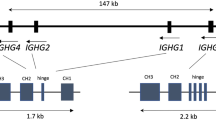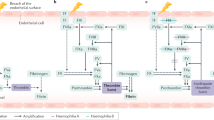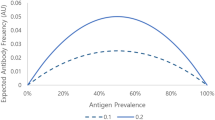Abstract
THE genetics of the Rhesus factor have turned out to be so complex and our understanding of it has advanced so rapidly that it is difficult for many to arrive at a clear picture of the situation now substantially established. The notation has been frequently changed, and we feel that only a notation which designates unambiguously the antibodies, the genes or gene-complexes, and the antigens with which these antibodies react can avoid widespread confusion. In Table 1 we set out such a notation suggested by Fisher1 which has been in use in this laboratory for about eighteen months. Six of the gene designations here adopted are due to Wiener2, but for the antibodies his notation seems arbitrary. While Cappell's names3 such as anti-C, anti-D, anti-E and anti-c are unambiguous, Wiener's do not seem satisfactory since, for example, the 85 per cent reacting serum is called anti-Rh0, whereas besides Rh0 it reacts with the genes Rhl, Rh2 and Rhz. In the designations here used, on the contrary, ? or anti-D indicates that the serum reacts with an elementary antigen D present equally in the gene complexes of Rh0, Rhl, Rh2 and RhZ as shown in Table 1. (For the remainder of this communication the h will be omitted from Rh.)
This is a preview of subscription content, access via your institution
Access options
Subscribe to this journal
Receive 51 print issues and online access
$199.00 per year
only $3.90 per issue
Buy this article
- Purchase on Springer Link
- Instant access to full article PDF
Prices may be subject to local taxes which are calculated during checkout
Similar content being viewed by others
References
Race, Nature, 153, 771 (1944).
Wiener, Science, 99, 532 (1944).
Cappell, Glasgow Med. J., 125 (Nov. 1944).
Race, Taylor, Cappell and McFarlane, Nature, 153, 52 (1944).
Stratton, Ann. Eugen., in the press
Mourant, Nature, 155, 542 (1945)
Waller and Levine, Science, 100, 453 (1944).
Race, Cappell and McFarlane, Nature, 155, 543 (1945).
Author information
Authors and Affiliations
Rights and permissions
About this article
Cite this article
FISHER, R., RACE, R. Rh Gene Frequencies in Britain. Nature 157, 48–49 (1946). https://doi.org/10.1038/157048b0
Issue Date:
DOI: https://doi.org/10.1038/157048b0
This article is cited by
-
Evolutionary genetics of the human Rh blood group system
Human Genetics (2012)
-
Genetic studies of the Roma (Gypsies): a review
BMC Medical Genetics (2001)
-
Immune cytopenias and some associated problems of immunohematology
Bulletin of Experimental Biology and Medicine (1996)
-
Are we all out of Africa?
Nature (1986)
-
Order of class III genes relative to HLA genes determined by the haplotype method
Immunogenetics (1986)
Comments
By submitting a comment you agree to abide by our Terms and Community Guidelines. If you find something abusive or that does not comply with our terms or guidelines please flag it as inappropriate.



